Introduction
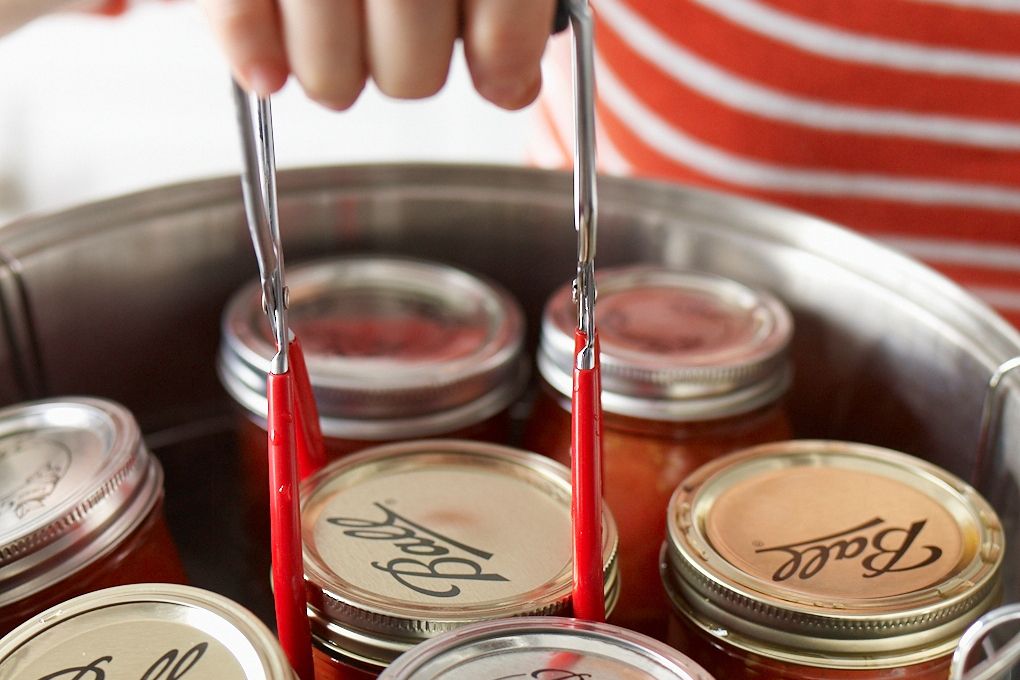
Preserving food through canning is a time-honored tradition that allows us to enjoy the flavors of fresh produce long after the harvest season has ended. Water bath canning and pressure canning are two popular methods used to preserve foods, but they differ in terms of technique, equipment, and types of foods they can preserve. In this article, we will explore the differences between water bath canning and pressure canning, as well as the benefits and limitations of each method. By understanding these differences, you can make an informed decision on which method is best suited for your canning needs.
Overview Of Water Bath Canning And Pressure Canning
Water bath canning and pressure canning are two popular methods used to preserve food through heat processing. Water bath canning is a simple and popular technique that involves placing jars of high acid foods into a large pot of boiling water. The high heat kills bacteria, yeasts, and molds, ensuring food safety. Pressure canning, on the other hand, is necessary for low acid foods, as it uses a specialized pressure canner to reach higher temperatures and pressure levels, effectively killing harmful microorganisms. Both methods have their pros and cons, and it’s important to choose the right method based on the acidity of the food being preserved.
Water Bath Canning
Water Bath Canning is a popular method used to preserve high acid foods. The process involves placing jars of food into a large pot of boiling water and allowing them to be heated and sealed properly. This simple technique does not require any special equipment, making it accessible for home canning. The high heat from the boiling water kills bacteria, molds, and yeasts, ensuring the safety of preserved foods. Water Bath Canning is ideal for acidic fruits, jams, jellies, pickles, and high acid tomatoes. It’s important to follow proper guidelines and recipes to ensure the success and safety of the canning process .
Water Bath Canning Process And Equipment
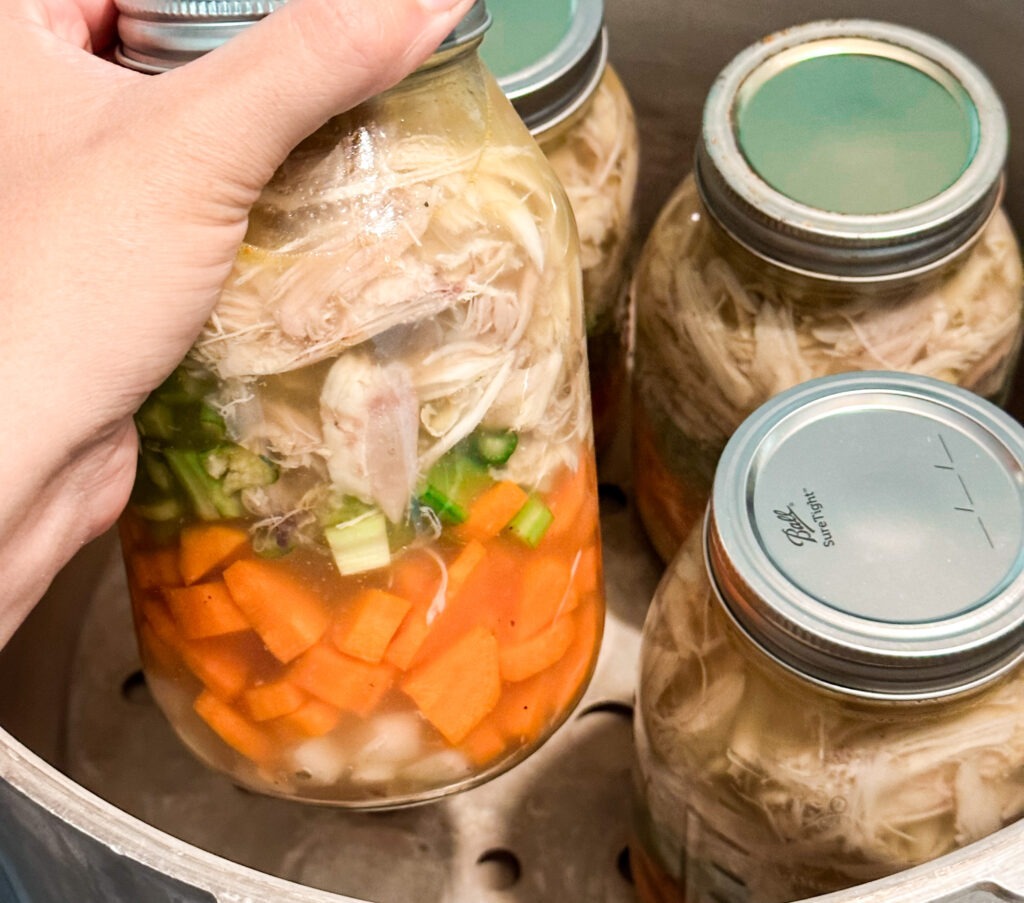
Water Bath Canning is a simple and straightforward method that requires basic equipment. To begin, the food to be preserved is prepared and placed into clean canning jars. The jars are then filled with a suitable preserving liquid or syrup and sealed with lids and bands. Next, the filled jars are carefully placed into a large pot of boiling water, ensuring they are submerged and have at least one inch of water covering the tops of the jars. The pot is covered, and the jars are processed in the boiling water for the recommended time specified in the recipe. Finally, the jars are carefully removed from the boiling water and placed on a heat-resistant surface to cool and seal properly. The process may require a jar lifter, canning funnel, and a timer to ensure precise timing. It’s important to follow proper guidelines and established recipes to ensure the safety and success of the Water Bath Canning process.
Benefits And Limitations Of Water Bath Canning
Water Bath Canning offers several benefits for preserving high acid foods. Firstly, it is a simple and affordable method that requires basic equipment. Additionally, the boiling water process destroys harmful bacteria, molds, and yeasts, ensuring food safety. Water Bath Canning also helps retain the flavor, texture, and color of the preserved foods. However, it is important to note that Water Bath Canning has its limitations. It is not suitable for canning low acid foods, such as meats and vegetables, as they require higher temperatures to eliminate the risk of botulism. Therefore, it is crucial to follow proper guidelines and recipes to ensure the safety and success of the Water Bath Canning process.
Pressure Canning
Pressure Canning is a method of preserving low acid foods by using pressure to reach high temperatures. This technique requires a specialized pressure canner or pressure cooker, which allows for the safe processing of low acid foods like vegetables, meats, and soups. The pressure canner creates a high-pressure environment, reaching temperatures of 240-250°F, which is necessary to eliminate the risk of botulism. Compared to Water Bath Canning, Pressure Canning offers more versatility in preserving a wider range of foods. It is important to follow proper guidelines and recipes for safe and successful pressure canning.
Pressure Canning Process And Equipment
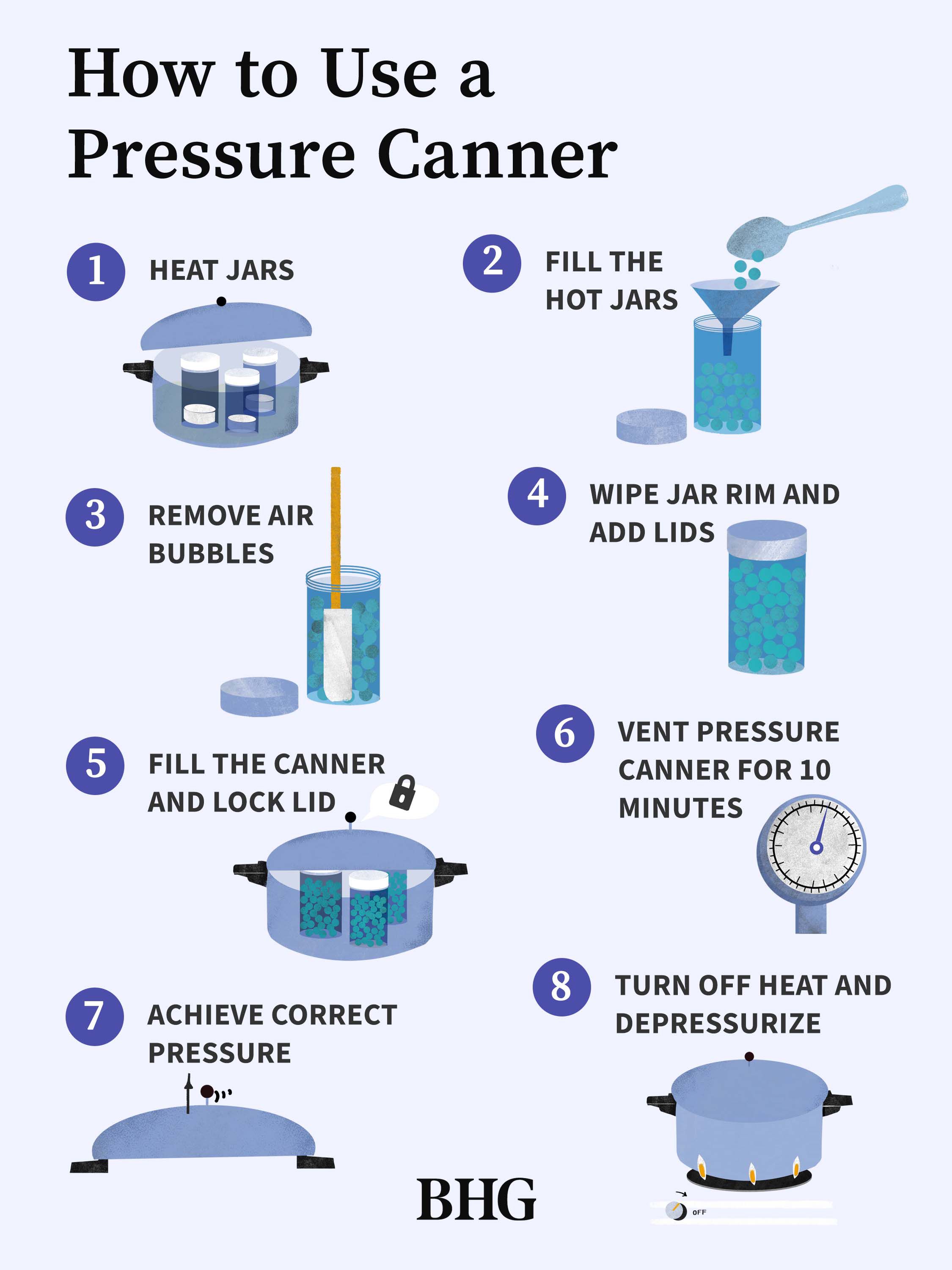
The process of pressure canning involves using a specialized pressure canner or pressure cooker to safely preserve low acid foods. The equipment used for pressure canning consists of a large, heavy-duty pot with a tight-fitting lid and a pressure gauge or weight. The food to be canned is placed in jars, along with any necessary liquid or seasoning. The jars are then sealed and loaded into the pressure canner, which is filled with a specific amount of water. The canner is heated, and as the water boils, steam builds up inside the canner, creating pressure. The pressure rises to a specific level and is maintained for a specific amount of time, depending on the recipe, to ensure that harmful bacteria, such as botulism, are destroyed. Once the processing time is complete, the pressure is slowly released, and the jars are allowed to cool before they are removed from the canner. It is important to follow proper instructions and safety guidelines when using a pressure canner to ensure successful and safe preservation of foods. Pressure canning allows for the preservation of a wider range of low acid foods than water bath canning, making it a versatile method for home canning. Properly canned foods can have a shelf life of up to one year or more when stored in a cool, dark place.
Advantages And Considerations Of Pressure Canning
Pressure canning offers several advantages over water bath canning. Firstly, it allows for the safe preservation of a wider range of low acid foods, including vegetables, meats, and seafood. This is because the high temperature and pressure reached in a pressure canner effectively destroy harmful bacteria, such as botulism. Additionally, pressure canning can produce a higher quality product with better flavors and textures, as the high pressure helps to retain the natural properties of the food. However, pressure canning does require specific equipment, such as a pressure canner, and it may take longer processing times compared to water bath canning. It is important to closely follow instructions and safety guidelines when using a pressure canner to ensure successful preservation.
Key Differences
In terms of key differences, the main distinction between water bath canning and pressure canning lies in their respective temperature and pressure requirements. Water bath canning relies on boiling water to reach temperatures of around 212°F (100°C). It is suitable for high acid foods such as fruits, jams, and pickles. On the other hand, pressure canning requires a pressure canner to achieve temperatures of 240-250°F (116-121°C). This method is essential for safely canning low acid foods such as vegetables, meats, and seafood. The pressure in the canner ensures that harmful bacteria, like botulism, are destroyed, providing a longer shelf life for preserved foods.
Temperature And Pressure Requirements In Water Bath Vs Pressure Canning
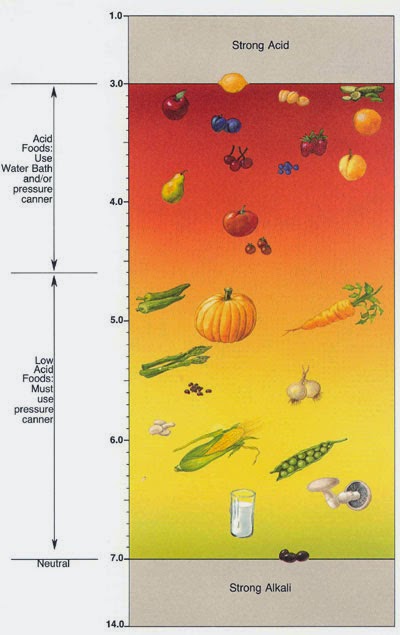
Water bath canning relies on boiling water to reach temperatures of around 212°F (100°C). This method is suitable for high acid foods such as fruits, jams, and pickles. On the other hand, pressure canning requires a pressure canner to achieve temperatures of 240-250°F (116-121°C). The increased pressure in pressure canning ensures that harmful bacteria like botulism are destroyed, providing a longer shelf life for preserved foods. The higher temperature and pressure in pressure canning are necessary for safely canning low acid foods such as vegetables, meats, and seafood.
Types Of Foods Suitable For Each Method
Water bath canning is ideal for high acid foods such as fruits, jams, and pickles. These foods have a pH level of 4.6 or lower, which inhibits the growth of botulism bacteria. The high heat of water bath canning effectively sterilizes and preserves these acidic foods.
On the other hand, pressure canning is necessary for low acid foods like vegetables, meats, and seafood. These foods have a pH level higher than 4.6, making them more susceptible to the growth of bacteria. Pressure canning with its higher temperature and pressure eliminates bacteria like botulism, ensuring the safety and extended shelf life of these low acid foods.
By using the appropriate method for each type of food, you can ensure safe and successful canning practices.
Safety And Shelf Life
When it comes to canning, ensuring safety is of utmost importance. Both water bath canning and pressure canning have specific guidelines to follow to prevent foodborne illnesses. It is crucial to carefully follow the recommended processing times and temperatures for each method to ensure proper sterilization and preservation of the canned food.
In terms of shelf life, properly canned foods can last for a long time. Water bath canned foods, especially high acid foods like jams and pickles, can have a shelf life of up to 1 to 2 years when stored in a cool, dark place. On the other hand, pressure canned foods, including low acid foods like vegetables and meats, can have a shelf life of up to 2 to 5 years.
To maximize shelf life, it is essential to store canned foods in a dry, cool environment and check for any signs of spoilage before consuming.
Safety Guidelines For Water Bath And Pressure Canning
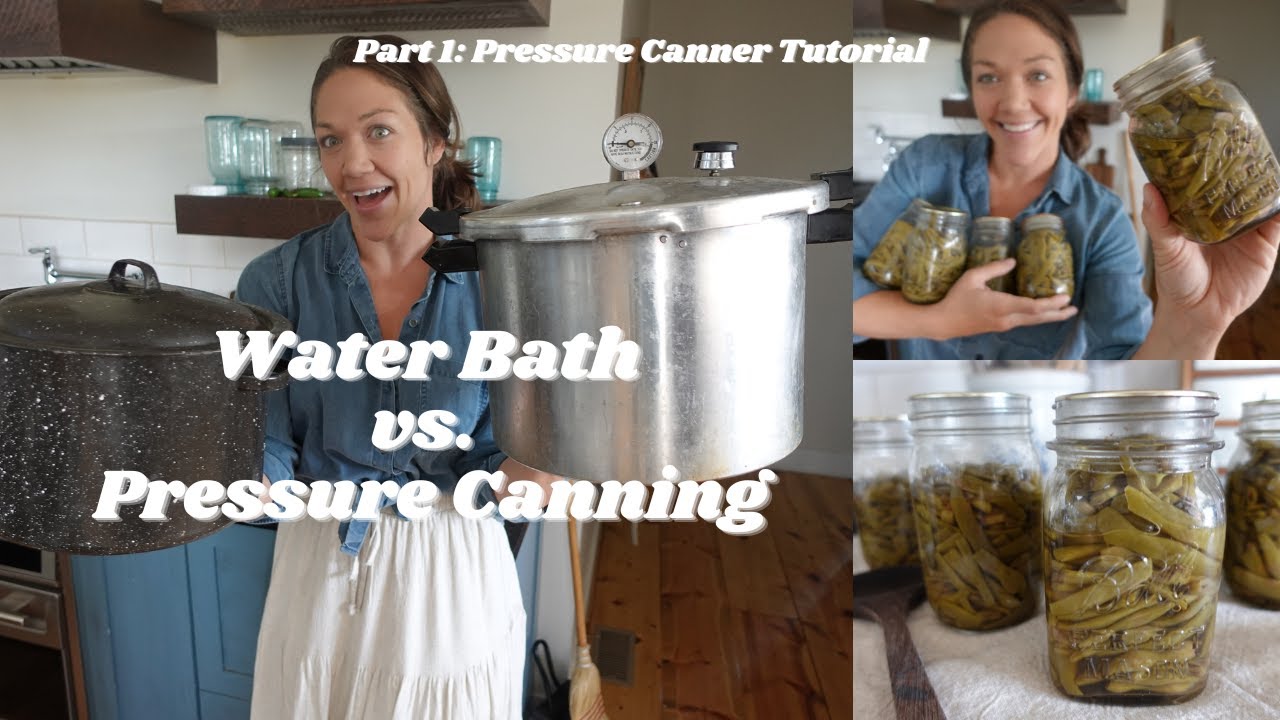
When it comes to canning, following proper safety guidelines is crucial to prevent foodborne illnesses. For water bath canning, it is important to ensure that the jars are sterilized before use, and that they are properly sealed and processed for the recommended amount of time. It is also essential to check the pH level of the foods being canned, as high acid foods are suitable for water bath canning.
On the other hand, pressure canning requires careful attention to the pressure and temperature requirements. It is important to maintain the correct pressure for the recommended time to ensure that harmful microorganisms are eliminated. Additionally, checking the seals of the jars after processing is important to ensure that they are properly sealed.
By following these safety guidelines, individuals can confidently preserve their foods using either the water bath or pressure canning method.
Comparison Of Shelf Life And Food Preservation Outcomes
When comparing the shelf life and food preservation outcomes of water bath canning and pressure canning, it is important to consider the method’s effectiveness in preventing spoilage and maintaining food quality.
Water bath canning has a shorter shelf life, typically lasting up to 1 year. This method works well for high-acid foods such as jams, jellies, and pickles. However, the shelf life may vary depending on the specific food and storage conditions.
On the other hand, pressure canning offers a longer shelf life, lasting up to 2-5 years. This method is necessary for low-acid foods like vegetables, meats, and soups. The high heat and pressure in pressure canning effectively eliminate harmful bacteria, ensuring safer and longer-lasting canned goods.
In summary, pressure canning offers a longer shelf life and is essential for preserving low-acid foods, while water bath canning is suitable for high-acid foods and has a shorter shelf life. It is important to follow recommended guidelines for both methods to ensure safe and effective food preservation.
Conclusion
In conclusion, water bath canning and pressure canning are both effective methods for preserving foods, but they differ in terms of their suitability for different types of foods and their shelf life. Water bath canning is ideal for high-acid foods such as jams, jellies, and pickles, with a shelf life of up to 1 year. On the other hand, pressure canning is necessary for low-acid foods like vegetables, meats, and soups, offering a longer shelf life of 2-5 years. When deciding between the two methods, it is important to consider the acidity of the food and follow the recommended guidelines for safe and successful home canning.
Key Factors To Consider When Choosing Between Water Bath Canning And Pressure Canning
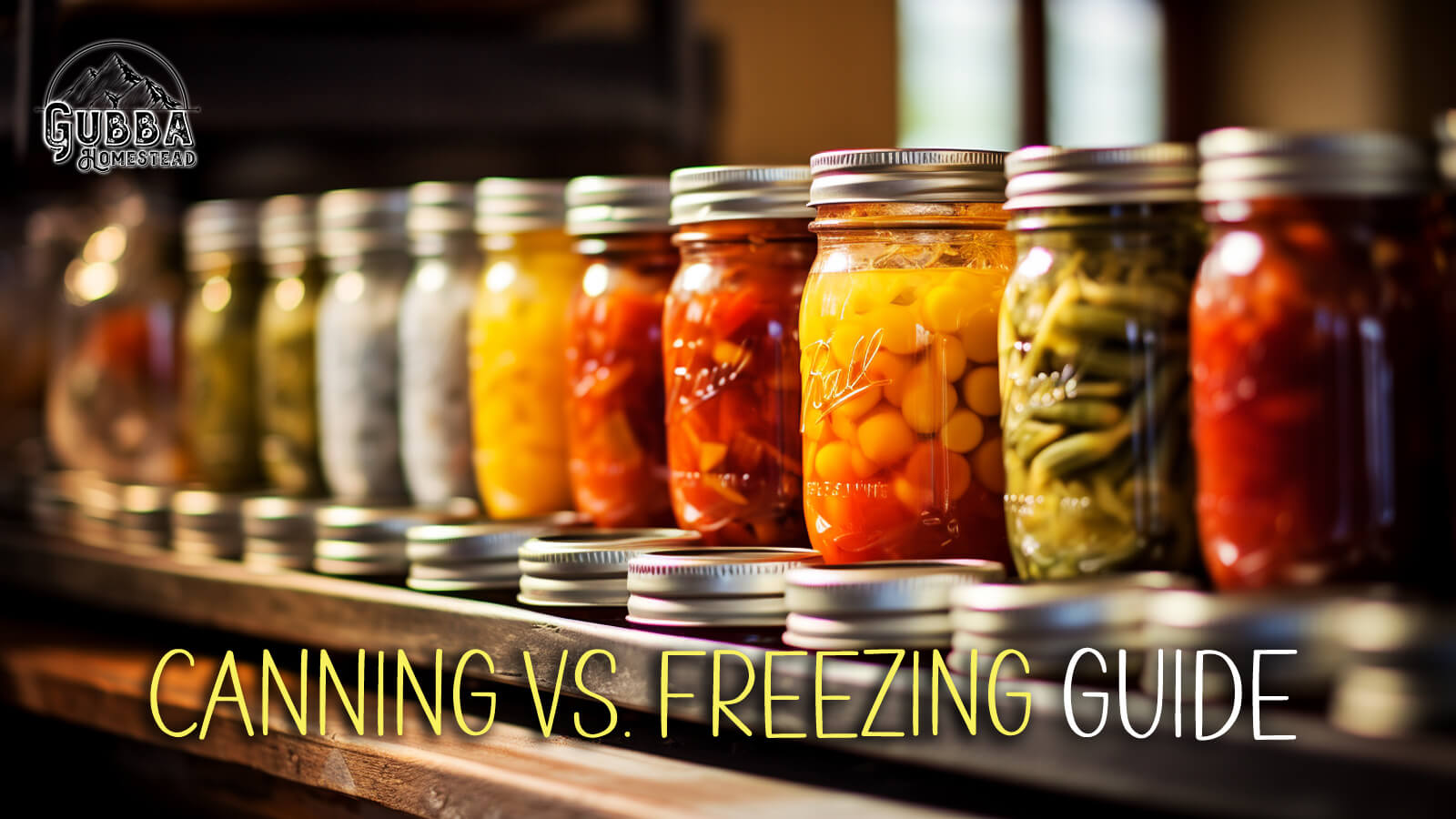
When deciding between water bath canning and pressure canning, there are several key factors to consider.
Firstly, consider the acidity of the food you wish to preserve. Water bath canning is suitable for high-acid foods such as jams, jellies, and pickles, while pressure canning is necessary for low-acid foods like vegetables, meats, and soups.
Secondly, take into account the shelf life you desire for your canned goods. Water bath canned foods typically have a shelf life of up to 1 year, while pressure canned foods can last 2-5 years.
Lastly, consider the equipment and time required for each method. Water bath canning requires a large pot and rack, while pressure canning requires a specialized pressure canner. Additionally, pressure canning requires longer processing times due to the need for higher temperatures.
By considering these factors, you can choose the appropriate method for your specific canning needs.
Tips For Successful Home Canning Practices
To ensure successful home canning, there are a few key tips to keep in mind. First, always follow tested and approved recipes to ensure proper acidity levels and safe canning techniques. Cleanliness is crucial, so make sure to thoroughly sanitize all utensils, jars, and equipment before use. Properly prepare your ingredients, ensuring they are washed, peeled, and sliced as necessary. When filling the jars, leave the appropriate headspace to allow for expansion during processing. Finally, always process your jars for the recommended time and at the correct temperature for your chosen canning method. Following these tips will help you achieve safe and delicious canned foods every time.
FAQ About Water Bath Canning Vs Pressure Canning: Preserving Methods Compared
Q: What is the difference between water bath canning and pressure canning?
A: Water bath canning uses boiling water to preserve high-acid foods, while pressure canning uses high pressure and steam to preserve low-acid foods safely.
Q: Which method is more suitable for preserving fruits like jams and jellies?
A: Water bath canning is ideal for preserving fruits like jams and jellies due to their high acidity levels, making them safe to process in a water bath canner.
Q: When should one choose pressure canning over water bath canning?
A: Pressure canning is recommended for preserving low-acid foods such as vegetables, meats, and poultry to prevent the risk of botulism as it requires higher temperatures to kill harmful bacteria.
Q: Can you use a water bath canner for all types of food preservation?
A: Water bath canning is limited to preserving high-acid foods with a pH of 4.6 or less, making it unsuitable for low-acid foods that require pressure canning for safe preservation.
Q: Is pressure canning more time-consuming compared to water bath canning?
A: Pressure canning typically involves longer processing times due to the higher temperatures required to safely preserve low-acid foods, whereas water bath canning is relatively quicker for high-acid foods.
Q: What equipment is essential for water bath canning and pressure canning?
A: Water bath canning requires a large pot or water bath canner and canning jars, while pressure canning necessitates a pressure canner, canning jars, and a reliable pressure gauge for proper processing.

ToroGrill Canada is excited to share our one-of-a-kind and authentic South American BBQ flavors with the wonderful people of Canada. Our journey began with a passion for bringing South America’s rich and vibrant culinary traditions to a new audience, and we have been dedicated to this mission ever since. Our story is one of inspiration, hard work, and the pursuit of excellence. Every recipe, every ingredient, and every cooking technique has been carefully honed and perfected to ensure that when you take a bite of our food, you experience the true essence of South American BBQ.